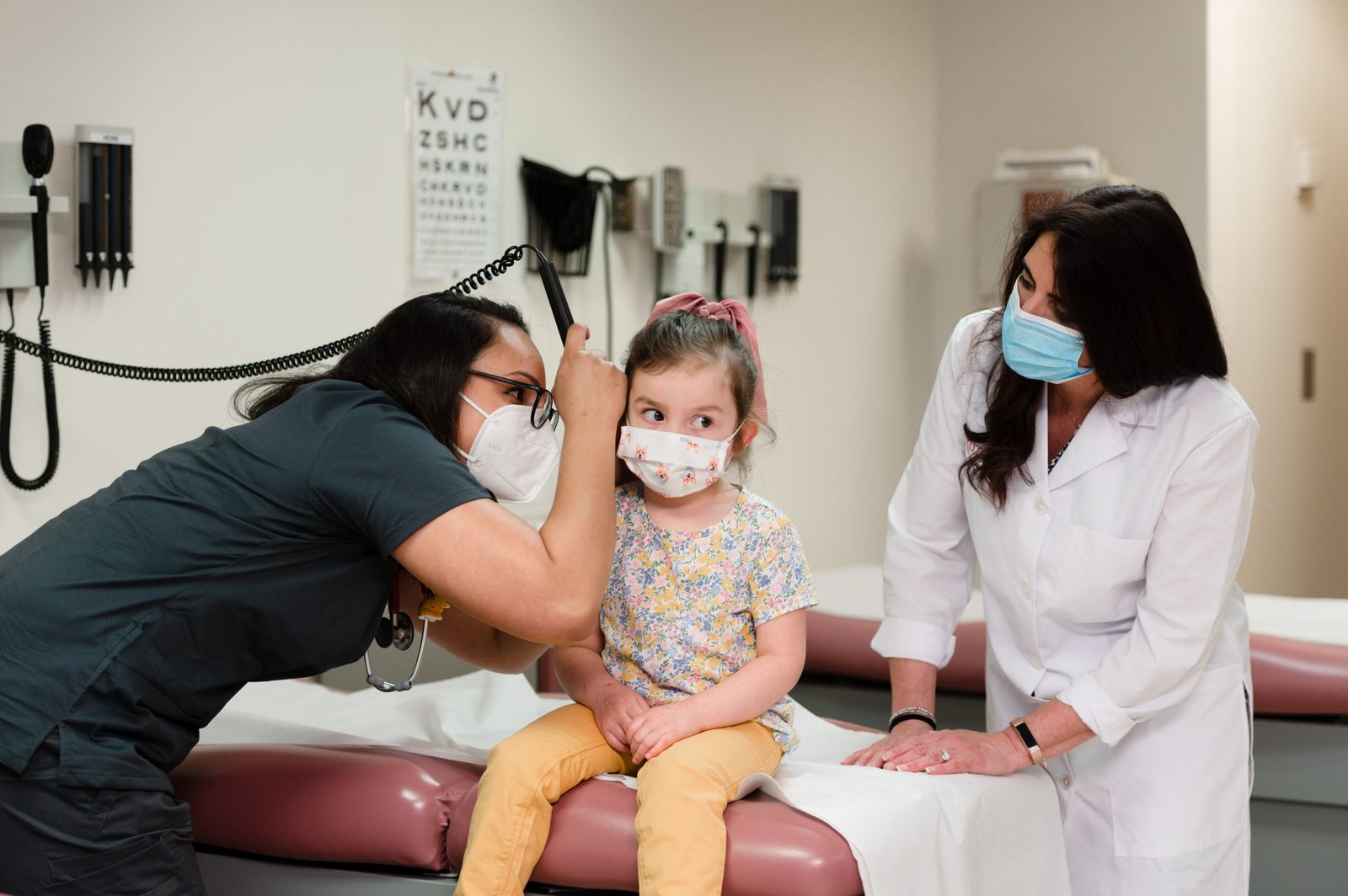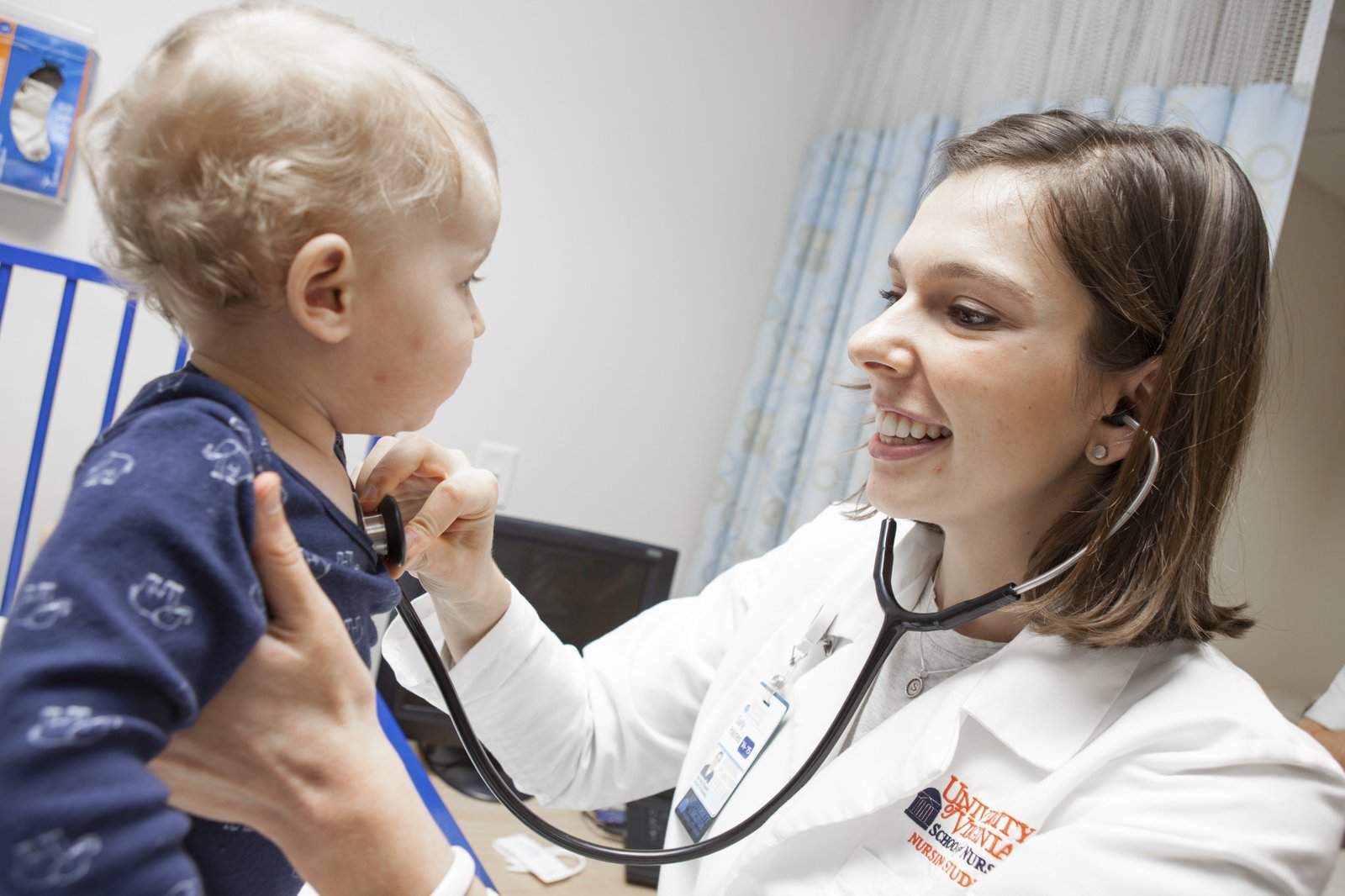Pediatric Nursing – Pediatric nursing may be defined as the nursing care of children from birth to adolescence. It includes the clinical and psychological aspects of nursing care.
Health of the children has been considered as the vital importance to all societies because children are the basic resource for the future of humankind. Nursing care of children is concerned for both the health of the children and for the illnesses that affect their growth and development. The increasing complexity of medical and nursing science has created a need for special area of child care, i.e. pediatric nursing.
Pediatric Nursing

Pediatric nursing is the specialized area of nursing practice concerning the care of children during wellness and illness. It includes preventive, promotive, curative and rehabilitative care of children. It emphasizes on all round development of body, mind and spirit of the growing individual. Thus, pediatric nursing involves in giving assistance, care and support to the growing and developing children to achieve their individual potential for functioning with fullest capacity.
CHAPTER -1: Introduction to Pediatric Nursing
1. Definition
2. Mortality and Morbidity
3. Acute and chronic illness
4. Roles of the pediatric nurse
CHAPTER-2: Growth & Development
1. Growth and development
2. Definition
3. Factors affecting growth and development
4. Developmental milestone
5. Growth chart
For Advanced Learners
6. Domain of Development
7. Nutritional assessment
8. Basal Metabolic Rate (BMR)
9. Body Mass Index (BMI)
10. Play
CHAPTER -3: Child Health Promotion and Disease Prevention
1. Nutrition
2. Sleep and activity
3. Dental health
4. Injury prevention
CHAPTER-4: Care Of Sick Children
1. Concepts of family centered care
2. Key elements of family centered care
3. Benefits of family-centered care
4. Pain Management
5. Triage
CHAPTER -5: Health Assessment of the Child & Family
1. A pediatric health history
2. Physical examination
3. Developmental assessment
4. Nutritional assessment
5. Anthropometric measurement
6. Family Assessment
CHAPTER-6: Nursing Care of Children with Acute and Chronic Infection
1. Acute respiratory infections (ARI)
2. Pneumonia
3. Nasopharyngitis
4. Pharyngitis
5. Tonsillitis
6. Croup
7. Otitis media
8. Measles
9. Meningitis
10. Diarrheal diseases
11. Worm infestation
12. Tetanus
13. Malaria
14. Dengue
CHAPTER-7: Nursing Care of Children with Febrile Convulsion and Epilepsy.
1. Convulsive disorder
2. Febrile convulsion
3. Epilepsy
4. Seizure

CHAPTER-8: Nursing Care of Children with Congenital Anomalies
1. Congenital anomalies
2. Cleft lip & cleft palate
3. Congenital heart disease (CHD)
4. Chromosomal abnormalities
5. Spina bifida
6. Hydrocephalus
7. Imperforated Anus/Anorectal Malformations
For Advanced Learners
8. Hirschsprung’s disease
9. Meckel’s diverticulum
10. Esophageal Atresia/Trachea-Eosophageal Fistula
11. Gastroschisis
12. Omphalocele/Exomphalos
13. Meningocele/Myelomeningocele
CHAPTER-9: Autism
1. Definition
2. Etiology
3. Risk factors
4. Clinical manifestation
5. Nursing management

CHAPTER-10: Nursing Care of Children with Alteration in Cardiovascular System
1. Ventricular septal defect (VSD)
2. Atrial Septal Defect (ASD)
3. Patent ductus arteriosus (PDA)
4. Aortic valve stenosis
5. Rheumatic Fever
6. Valvular Heart Disease
7. Carditis
8. Congestive Heart Failure
CHAPTER-11: Nursing Care of Children with Alteration in Hematologic and Lymphatic System
1. Anemia
2. Hemophilia
3. Leukemia
4. Thalassemia
CHAPTER-12: Nursing Care of Children with Renal Diseases
1. Acute glomerulonephritis
2. Nephritic syndrome
3. Chronic renal failure

CHAPTER-13: Nursing Care of Children with Alteration in Endocrine System
1. Juvenile Hypothyroidism
2 .Juvenile Diabetes Mellitus
3. Diabetes Insipidus
CHAPTER-14: Nursing Care of Children with Communicable Disease
1. Communicable diseases
2. Chickenpox
3. Mumps
4. Influenza
5. Poliomyelitis
6. AIDS
7. Hepatitis
CHAPTER-15: Child Health Promotion and Disease Prevention
1. Protein Energy Malnutrition
2. Malnutrition
3. Marasmus And Kwashiorkor
4. Low Birth Weight (LBW)
5. Xerophthalmia
6. Iodine Deficiency Disorder (IDDs)/ Goitre
7. Nutritional Anaemia
8. Dehydration
CHAPTER-16: Immunization
1. Immunology
2. Immunity
3. Active Immunity and Passive Immunity
4. Innate Immunity & Acquired Immunity
5. Immunization and Vaccination
6. EPI (Expanded program on immunization):
7. Cold chain
8. Hypersensitivity
CHAPTER-17: Nursing Care of The High-Risk Newborns
1. Nursing Care of The High-Risk Newborns

CHAPTER -18: Nursing Care of Newborn with Abnormal Condition at Birth
1. Common health problems of newborn
2. Hyperbilirubinemia/jaundice
3. Physiological jaundice
4. Pathological jaundice
5. Phototherapy
6. Exchange transfusion
7. Hemolytic disease of the newborn
8. Respiratory distress syndrome (RDS)
9. Common infections of neonate
10. Neonatal sepsis
11. Necrotizing enterocolitis (NEC)
12. Apgar score
13. Care of Dying Children
